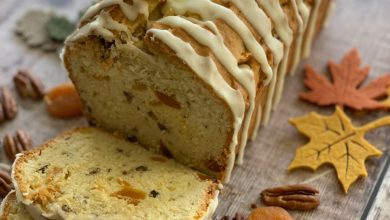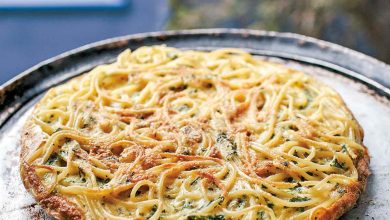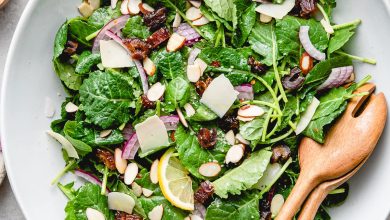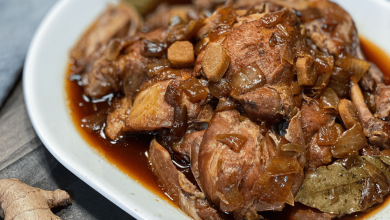Almond Cake
🍰 Almond Cake 🍰
Almond cake is a delightful dessert that’s known for its rich, nutty flavor and moist texture. It’s a treat that’s loved by many for its sweet and slightly nutty taste. Here’s a comprehensive overview of almond cake, including its history, components, preparation steps, and estimated preparation time:
📜 History:
Almond cake has a long and diverse history, with variations found in various cultures around the world. Almonds have been cultivated for thousands of years, with their use in cakes dating back to ancient civilizations. In medieval Europe, almond cake was a popular dessert among royalty, often served at feasts and celebrations. Over time, different cultures have added their own unique twists to the almond cake recipe, resulting in various regional variations.
🧁 Components:
The core components of a classic almond cake typically include:
- Almonds: Ground almonds or almond flour are the star ingredient, providing the cake with its distinctive nutty flavor.
- Sugar: Granulated sugar adds sweetness to the cake.
- Butter: Unsalted butter contributes richness and moisture to the cake.
- Eggs: Eggs are used as a binding agent and to create a tender crumb.
- Flour: All-purpose flour or almond meal is used to give structure to the cake.
- Baking Powder: This leavening agent helps the cake rise and become fluffy.
- Flavorings: Vanilla extract or almond extract may be added for extra flavor.
👩🍳 Preparation Steps:
- Prepare Your Pan: Grease and line a cake pan with parchment paper to prevent sticking.
- Mix Dry Ingredients: In a bowl, combine almond flour, all-purpose flour, and baking powder. Set this mixture aside.
- Cream Butter and Sugar: In a separate bowl, cream together softened butter and sugar until light and fluffy.
- Add Eggs: Gradually add eggs one at a time, mixing well after each addition.
- Incorporate Dry Ingredients: Gently fold in the dry ingredient mixture into the wet ingredients until a smooth batter forms.
- Bake: Transfer the batter into the prepared pan and smooth the top.
- Baking Time: Bake in a preheated oven at 350°F (175°C) for approximately 30-40 minutes, or until a toothpick inserted into the center comes out clean.
- Cool: Allow the cake to cool in the pan for about 10 minutes, then transfer it to a wire rack to cool completely.
- Serve: You can enjoy almond cake as is or with a dusting of powdered sugar, a drizzle of icing, or a dollop of whipped cream. It’s delicious with a cup of coffee or tea!
⏰ Preparation Time:
The total time needed to prepare almond cake may vary depending on your baking experience, but it typically takes around 1 to 1.5 hours, including preparation and baking time. It’s a relatively simple cake to make and perfect for special occasions or as a delightful everyday treat.
So, whether you’re savoring a slice of almond cake steeped in history or preparing it fresh in your kitchen, its nutty, sweet goodness is sure to make your taste buds smile! 😊🍰✨
Certainly! Here are the nutrition facts and some health information for a typical serving of almond cake:
📊 Nutrition Facts (Approximate values for one slice of almond cake):
- Calories: Approximately 250-300 calories
- Total Fat: About 18-20 grams
- Saturated Fat: Around 5-7 grams
- Cholesterol: Approximately 30-40 milligrams
- Sodium: Roughly 150-200 milligrams
- Total Carbohydrates: About 20-25 grams
- Dietary Fiber: Around 2-3 grams
- Sugars: Approximately 15-18 grams
- Protein: About 4-6 grams
🌱 Health Information:
-
Healthy Fats: Almond cake contains a good amount of healthy fats, primarily from almonds and butter. Almonds are a source of monounsaturated fats, which are considered heart-healthy.
-
Protein: While almond cake is not a high-protein food, it does contain a modest amount of protein from the almond flour and eggs.
-
Fiber: The dietary fiber content in almond cake is relatively low, but almonds do provide some fiber, which can aid in digestion.
-
Calorie Content: Almond cake is a calorie-dense dessert, so portion control is important if you are watching your calorie intake.
-
Added Sugars: Almond cake often contains added sugars, contributing to its sweet taste. Be mindful of your sugar consumption, especially if you have dietary restrictions.
-
Nutritional Variation: The nutritional content can vary depending on the recipe, portion size, and specific ingredients used. Some recipes may use alternative sweeteners or flours, affecting the nutritional profile.
-
Allergens: Almond cake contains almonds and eggs, which can be allergens for some individuals. Be cautious if you have allergies.
-
Balance: While almond cake can be enjoyed as an occasional treat, it’s essential to balance it with a diet rich in fruits, vegetables, whole grains, and lean proteins for overall nutritional health.
Remember that these values are approximate and can vary depending on the specific recipe and serving size. Enjoy almond cake in moderation as part of a well-balanced diet for a delicious dessert experience. 😊🍰🥜








